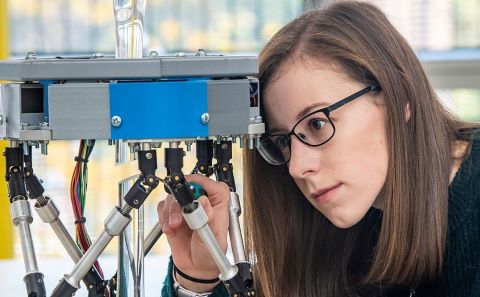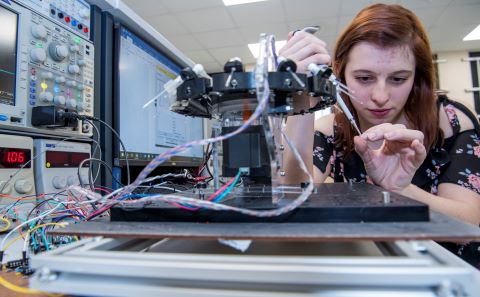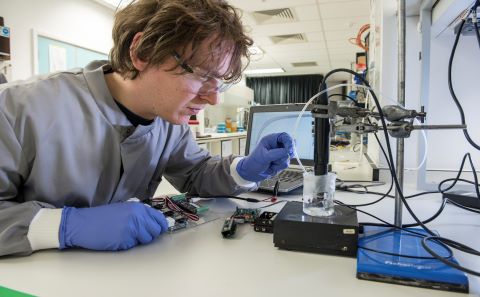
MEng Mechanical Engineering / Biomedical Engineering
Find out more

Find out more

Find out more

Find out more
Innovative technologies developed by computer scientists at the University of Southampton will be unveiled in an online edition of the world’s largest and most influential technology show, CES 2021.
Postgraduate researchers Iris Kramer and Ryan Beal will demonstrate two AI-based startups based on cutting-edge Electronics and Computer Science (ECS) research across the four-day show, running from Monday 11th to Thursday 14th January.
ArchAI, founded by Iris Kramer in the Vision, Learning and Control Group, uses deep-learning software to automatically detect unknown archaeological sites.
Sentient Sports, co-founded by Ryan Beal in the Agents, Interaction and Complexity (AIC) Group, uses artificial intelligence to help sports managers build the best teams for the world’s top leagues.
The ECS entrepreneurs are among two of eight startups exhibiting at CES 2021 through Future Worlds, the on-campus startup accelerator at the University of Southampton.
CES usually takes place in Las Vegas and attracts over 170,000 visitors who flock to see the newest technology being showcased by the 4,000+ tech firms in attendance. 2021 sees the event go all-digital, taking the global reach of CES wider than ever before.
ArchAI uses technology developed during Iris’ PhD and previous degree in archaeology. She combines the two domains to deliver rapid results and improved outcomes for the construction industry by automatically detecting archaeological sites on Earth Observation data.
"By using our technology over conventional techniques, developers could save tens of thousands in costs, as well as months of time that would be spent surveying land pre-development," Iris says. "Going forward there are wide ranging environmental challenges globally that our world-first technology can address."
Sentient Sports, together with their partner AI Abacus, are working with decision makers at leading clubs across Europe to help aid with recruitment.
The startup's solution uses research-developed algorithms to boost football managers' decision-making and scouting process for buying and selling players, which promises to drive up footballing and financial results.
"Football, like other sports, has huge amounts of data associated with it," Ryan says. "Our algorithms can assess a number of qualities, including the suitability of a player to the style of a new team, to optimise the decision-making and scouting process when buying and selling players."
Future Worlds is returning to CES for a sixth consecutive year as the UK's only exhibiting university.
Current University of Southampton startups being exhibited at CES 2021 also include Absolar, an AI-powered software that simulates solar radiation to inform renewable energy decisions, Aquark Technologies, a revolutionary miniaturised cold atom chip for quantum hardware, and Inpulse, smart clothing to correct muscle imbalances and improve sports performance.
They will be joined by three University of Southampton startups previously supported by Future Worlds. Aura Vision, co-founded by former ECS postgraduate researchers Daniel Martinho-Corbishley and Jaime Lomeli, offers a revolutionary in-store analytics for offline retailers using existing security cameras. BOON, co-founded by Electronic Engineering graduates Dylan Grey and Mike Oakley, creates privacy-first personalised experiences for online retailers. Emitwise, founded by Acoustical Engineering graduate Mauro Cozzi, is helping speed up the carbon accounting and reporting process for environmentally-conscious companies.
Ben Clark, Future Worlds Director, says: "We are very excited as Southampton steps up as the only university representing the UK at CES for a sixth consecutive year. The startups we have selected to exhibit are inspirational future leaders in their field, destined to make a huge change in the world of AI and quantum.
"More startups than ever before are exhibiting with Future Worlds at this year's CES, reflecting the immeasurable vision, talent and determination to push through the pandemic to help create a more sustainable, connected and healthy world to come."
Email: zj1y19@soton.ac.uk